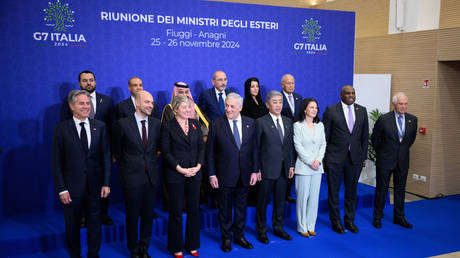ARTICLE AD BOX
As the date for the US presidential election nears, the race between Democratic nominee Kamala Harris and her Republican counterpart Donald Trump has heated up. Even though American citizens prepare to cast their votes on November 5, the electoral journey began many months ago, and it involves a complex process.
Early preparations
A year before the election, candidates from the two main political parties, the Democrats and Republicans, start their campaigns. They assemble teams, launch fundraising initiatives and embark on nationwide tours to garner support.
Campaign kick-off
As campaigns ramp up, candidates engage in televised debates, which serve as a platform to articulate their policies and defend positions on various issues.
Election process
The US presidential election process can seem overwhelming, with terms like ‘Electoral College,' ‘National Conventions,' ‘Primary' and ‘Caucus' often confusing. Let's understand them better first:
Here's what they mean:
- Primaries: Primaries allow party members to vote for their preferred candidate in a secret ballot, similar to a general election. The results determine the allocation of delegates who will support candidates at the national conventions.
- Caucuses: Caucuses involve party members gathering to discuss and publicly vote for their preferred candidate. This interactive process also impacts the number of delegates each candidate receives for the conventions.
- National Conventions: National conventions are important for each political party. Delegates endorse their chosen candidates, leading to the official announcement of the presidential nominee. The selected candidate also names their Vice President or running mate.
- Electoral College: The Electoral College is a mechanism through which electors from each state cast their votes to elect the President. Each state is allocated a specific number of electors based on its Congressional representation, totalling 538 electors nationwide. After the general election, each elector casts one vote, with a majority of 270 needed to win.
Here's a breakdown of the election timeline:
- Spring of the year before the election: Candidates announce their intentions to run, starting their campaigns. They officially register with the Federal Election Commission (FEC) to run for president.
- Summer of the year before the election to spring of election year: Primary and Caucus debates are held across the country.
- January to June of election year: States and political parties conduct presidential Primaries and Caucuses, allowing voters to express their preferences for candidates.
- July to early September: Each party hosts nominating conventions to select their presidential candidates. It is during these conventions that the chosen presidential candidates usually announce their Vice-Presidential nominees.
- September and October: Candidates participate in a series of presidential debates, providing voters with an opportunity to assess their stance on issues and policies they will work on, should they get elected.
- Early November: The voting takes place on the first Tuesday of November in the election year.
- December: Members of the Electoral College cast their votes for president, finalising the nation's leader.
- Early January of the next calendar year: Congress officially counts the electoral votes, confirming the results.
- January 20: On Presidential Inauguration Day, the newly elected president is sworn in.
.png)
 3 weeks ago
1
3 weeks ago
1








 English (US)
English (US)